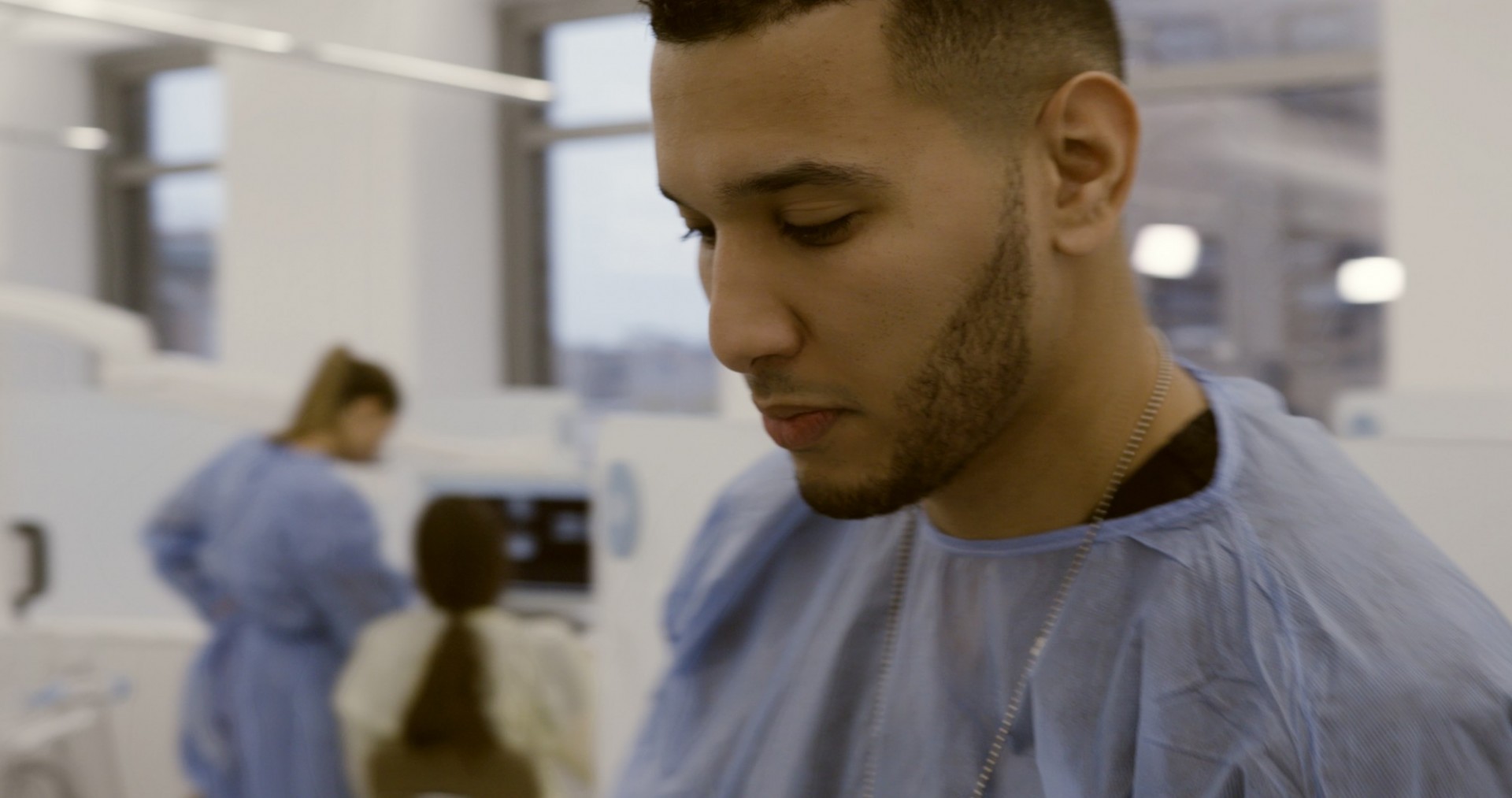New Center Brings State-of-the-Art Precision Dentistry to the Upper Manhattan Community

Imagine a sleek and efficient dental clinic with automated chairs and instruments wired to measure every aspect of a patient’s experience. Miles of blue Ethernet cable under a raised floor send the information to a nearby server that crunches data on everything from which dental tools were used to patients’ reactions. A curved ceiling dampens sound over the 48 cubicles enclosing the dental chairs, keeping the interactions private.
This is the new Center for Precision Dental Medicine, located on the fifth floor of the Vanderbilt Clinic on 168th Street, where the next generation of dentists is being trained. Known as VC5, this light-filled space was designed by Pei Cobb Freed & Partners (founded by iconic modern architect I.M. Pei) to be both technologically smart and aesthetically pleasing.
“Many new clinics look very nice, but this is also the first big-data precision dental medicine clinic in the world,” said Christian Stohler, dean of the College of Dental Medicine. “The idea was to create an environment where patients have maximum privacy, while students, instructors and staff create a community that allows us to work together.”
Stohler joined Columbia in 2013 after a decade as dean of the University of Maryland School of Dentistry in Baltimore, which under his tenure became the largest public dental school in the U.S. In his own research he focuses on the genetics, endocrinology and neurobiology of the human response to pain, particularly in patients with the chronic jaw-joint disorder known as TMJD (temporoman- dibular joint and muscle disorder).
The idea of a plugged-in clinic came, somewhat inadvertently, from the dental chair vendor, which uses technology to gather a host of metrics for quality control. Why not do the same for the entire dental clinic environment, Stohler wondered. “I thought the data-gathering possibilities would be useful to teachers and students,” he said. “We can record this information and use machine learning to understand what is important.”
Each connected dental chair can collect detailed information about the consultation between student dentist and patient, from the time a patient spends waiting and in consultation to which tools are used and for how long, to the patient’s reactions and, coming soon, their vital signs. Most patients come from the upper Manhattan community that surrounds Columbia’s Irving Medical Center.
“When most people go to the dentist they don’t think that’s a positive experience,” Stohler said. “I think that works to our advantage for the first time, because when somebody is exposed to a negative experience, you are activating a number of biological symptoms that could be predictive of the person’s ability to be resilient or susceptible to a stressor.
“Most chronic diseases have a significant stress component. What can we know about their vulnerability to stress with respect to how fast these chronic diseases actually progress? That is an avenue that is unique for dentistry.”
Image Carousel with 11 slides
A carousel is a rotating set of images. Use the previous and next buttons to change the displayed slide
-
Slide 1: Image Courtesy of Osmosis Films
-
Slide 2: Image Courtesy of Osmosis Films
-
Slide 3: Image Courtesy of Osmosis Films
-
Slide 4: Image Courtesy of Osmosis Films
-
Slide 5: Image Courtesy of Osmosis Films
-
Slide 6: Image Courtesy of Osmosis Films
-
Slide 7: Image Courtesy of Osmosis Films
-
Slide 8: Image Courtesy of Osmosis Films
-
Slide 9: Image Courtesy of Osmosis Films
-
Slide 10: Image Courtesy of Osmosis Films
-
Slide 11: Image Courtesy of Osmosis Films

Image Courtesy of Osmosis Films

Image Courtesy of Osmosis Films

Image Courtesy of Osmosis Films

Image Courtesy of Osmosis Films

Image Courtesy of Osmosis Films

Image Courtesy of Osmosis Films

Image Courtesy of Osmosis Films

Image Courtesy of Osmosis Films

Image Courtesy of Osmosis Films

Image Courtesy of Osmosis Films

Image Courtesy of Osmosis Films
Stohler is hoping that the use of data will transform dentistry much as it has medicine. “In the past, we expected patients to benefit when 80 percent of the people had a positive response to certain interventions,” he said. “Nowadays we would like to be much more specific, to know how a treatment works or whether there’s a likelihood of failure.”
Data analysis can breach that gap, and the dental school is working with data scientists on the Morningside campus to uncover the most salient facts in the analytics so students and their instructors can make data-driven decisions.
“In the past, dental education has been primarily focused on you picking up the instruments that we told you to take,” Stohler said, who notes that the current generation is very different from the dentists practicing now. They have much more dexterity with their thumbs, for example, which might usher in new tool designs. “What we would like to do now is see how people solve these tasks using the instruments that they prefer.”
Columbia has a unique ability to bring medicine and dentistry closer together, Stohler said, “because we have a talent pool here that is in a position to push the science to where we need to be. Dentistry cannot do it from within.”
He added, “I wish I were 20 years younger, to do all that incredible research that could be done here.”